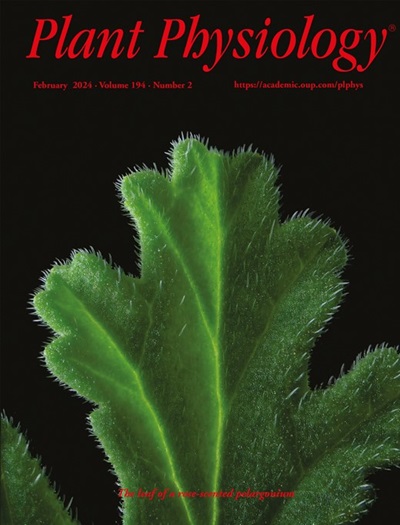The transcription factor TaWRKY27 confers enhanced stripe rust susceptibility by facilitating auxin accumulation in wheat
IF 6.5
1区 生物学
Q1 PLANT SCIENCES
引用次数: 0
Abstract
Many pathogens exploit host susceptibility genes to facilitate their colonization. The disruption of these susceptibility genes holds the potential to confer broad-spectrum and robust disease resistance, offering a promising crop improvement strategy. However, little is known about the molecular mechanisms by which susceptibility genes suppress host immunity. In this study, we identified a transcription factor (TF) in wheat (Triticum aestivum L.), TaWRKY27, that was substantially induced during Puccinia striiformis f. sp. tritici (Pst) infection. TaWRKY27 is a nucleus-localized transcriptional activator. TaWRKY27 down-regulation in wheat conferred increased Pst resistance, while TaWRKY27 overexpression substantially decreased Pst resistance and increased auxin accumulation. Notably, auxin application to wheat leaves suppressed the expression of defense-related genes. Additionally, integrated DNA affinity purification sequencing (DAP-seq) and RNA-seq analyses demonstrated that TaWRKY27 directly activates the transcription of two 2-oxoglutarate-dependent dioxygenase (2OGD) superfamily members, aminocyclopropane carboxylate oxidase protein TaACO3 and senescence-related protein TaSRG1, a finding confirmed through yeast one-hybrid and dual-luciferase reporter assays. Notably, both TaACO3 and TaSRG1 negatively regulated wheat resistance to Pst. Taken together, our findings reveal that TaWRKY27 responds to Pst infection and contributes to wheat stripe rust susceptibility by facilitating TaACO3/TaSRG1-mediated auxin accumulation. These results highlight TaWRKY27 as a potential target for engineering enhanced stripe rust resistance in wheat.转录因子TaWRKY27通过促进小麦生长素积累而增强小麦对条锈病的敏感性
许多病原体利用宿主的易感基因来促进它们的定植。这些易感基因的破坏有可能赋予广谱和强大的抗病能力,提供了一种有前途的作物改良策略。然而,对易感基因抑制宿主免疫的分子机制知之甚少。在这项研究中,我们在小麦(Triticum aestivum L.)中发现了一个转录因子TaWRKY27,该转录因子在小麦(Triticum aestivum L.)侵染小麦(Pst)时被大量诱导。TaWRKY27是一种核定位转录激活因子。小麦中TaWRKY27的下调提高了小麦对Pst的抗性,而TaWRKY27的过表达则显著降低了小麦对Pst的抗性,增加了生长素的积累。值得注意的是,在小麦叶片中施用生长素抑制了防御相关基因的表达。此外,综合DNA亲和纯化测序(DAP-seq)和RNA-seq分析表明,TaWRKY27直接激活2-氧葡萄糖酸盐依赖性双加氧酶(2OGD)超家族成员,氨基环丙烷羧酸氧化酶蛋白TaACO3和衰老相关蛋白TaSRG1的转录,这一发现通过酵母单杂交和双荧光素酶报告基因检测得到证实。值得注意的是,TaACO3和TaSRG1均负向调控小麦对Pst的抗性。综上所述,我们的研究结果表明,TaWRKY27响应Pst感染,并通过促进TaACO3/ tasrg1介导的生长素积累而促进小麦条锈病易感性。这些结果表明,TaWRKY27是提高小麦条锈病抗性的潜在靶点。
本文章由计算机程序翻译,如有差异,请以英文原文为准。
求助全文
约1分钟内获得全文
求助全文
来源期刊

Plant Physiology
生物-植物科学
CiteScore
12.20
自引率
5.40%
发文量
535
审稿时长
2.3 months
期刊介绍:
Plant Physiology® is a distinguished and highly respected journal with a rich history dating back to its establishment in 1926. It stands as a leading international publication in the field of plant biology, covering a comprehensive range of topics from the molecular and structural aspects of plant life to systems biology and ecophysiology. Recognized as the most highly cited journal in plant sciences, Plant Physiology® is a testament to its commitment to excellence and the dissemination of groundbreaking research.
As the official publication of the American Society of Plant Biologists, Plant Physiology® upholds rigorous peer-review standards, ensuring that the scientific community receives the highest quality research. The journal releases 12 issues annually, providing a steady stream of new findings and insights to its readership.
 求助内容:
求助内容: 应助结果提醒方式:
应助结果提醒方式:


